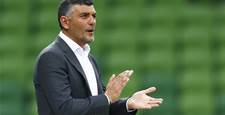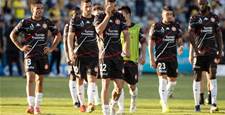FOOTBALL in Australia is undoubtedly in a very healthy state at present. TV viewing figures for the Socceroos and overseas leagues are high.
Participation rates at amateur and social levels are impressive. The general public has never been as interested in the sport as they are now.The Socceroos are the flagship of the current state of the game. They have overtaken Ricky Ponting’s cricketers and the Kiwi-coached Wallabies as Australia’s most popular representative side.
The trend extends to Queensland and the Gold Coast. In Brisbane, over 30,000 people braved torrential rain on a Wednesday evening to watch them dismantle Qatar. Over 50,000 were at the match against Iraq. Possibly most impressive of all was the reported 3,000 who watched the team train at the Gold Coast.
This figure is almost certain to guarantee the team plays a full fixture at Skilled Park in the next couple of years as part of the Queensland Government’s agreement with the FFA; an event certain to further drive football’s popularity in the region.
Unfortunately, though, the levels of interest in the Socceroos and the big European leagues do not seem to extend to the Hyundai A-League.
The fact is that many of Australia’s football-loving public do not see the competition as elite, and as such aren’t willing to embrace it.
No matter how much they are told of what Adelaide has achieved in the ACL, how competitive the teams and matches are, and how we can embrace the league not for being ‘elite’ but simply for being ‘ours’, the crowds just don’t fairly reflect the interest in the sport in this country.
Ultimately, the crowds the A-League wants will only be lured by convincing the Manchester United and Real Madrid lovers in Australia that our league can be just as entertaining as watching the world’s best on TV.
Here enters Clive Palmer’s Gold Coast United. Everything promised by this very wealthy man has suggested he wants to build a squad capable of taking the league by storm.
The names he has thrown up so far are a standard above what is currently on offer. The money he is willing to spend extends well beyond the forced restrictions of the competitions salary cap.
It’s natural to fear the repercussions of what Palmer intends to do. A ‘super-club’ in the competition could well harm the fan-base of other clubs in the league. Look how Perth’s crowds have dwindled along with the team’s fortunes.
Conversely, though, the likes of Tony Sage at the Glory and Terry Serepisos of Wellington Phoenix are very wealthy men. Perhaps if they were forced to spend more of their money on building a competitive football club, they would do it and so naturally the overall standard of the league would rise to meet GC United’s new benchmark.
The local league needs to reach a certain level to obtain the interests of all the committed football Anglophiles in this country and it seems Clive Palmer is on a mission to push for this standard. If unsuccessful, GC United can still be a reasonable club in a reasonable league.
But there is a real sense that if successful, there’s a whole lot more that can be achieved not only for the club but for the entire league.
The AFL has been making a lot of noise about the Gold Coast being a final frontier in making their sport the true ‘national’ game.
But if Palmer can get it right, it could well be the place where the A-League finally establishes itself as a truly ‘elite’ competition in this country.












